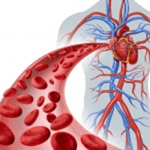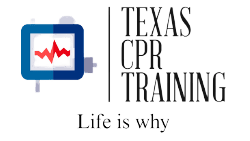
Cardiovascular Disease
Cardiovascular disease (heart disease) causes one third of American deaths each year. An estimated 2,200 Americans die each day. That’s about 1 death every 40 seconds. Cardiovascular diseases causes more deaths every year than every form of cancer and Lower Respiratory Disease combined.
Heart Disease
Heart disease encompasses numerous conditions that are related to atherosclerosis which is a condition that develops when plaque builds on the walls of the arteries. Diseases that fall under the cardiovascular disease umbrella include blood vessel diseases such as coronary artery disease in addition to congenital heart defects, heart attacks, and strokes.
Heart Attacks
Heart attacks occur when the blood flow to part of the heart is blocked by a blood clot. If the flow is stopped completely the muscle in the part of the heart that’s supplied by the blocked artery will begin to die. With immediate intervention most heart attack survivors continue on to a normal life.
Strokes
Ischemic strokes are the most common type of stroke which happens when a blood vessels that feeds the brain is blocked and unable to deliver the blood. When a part of the brain isn’t receiving the nutrients from the blood it shuts off and the brain cells start to die. As a result the individual suffering from a stroke will have an inability to carry out simple functions like walking or talking. In the case of a hemorrhagic stroke a blood vessel in the brain bursts and is likely caused by uncontrolled blood pressure
Coronary artery disease
Coronary artery disease (CAD) is the most common form of cardiovascular disease and is the leading cause of death in the United States. CAD occurs when the arteries are hardened and narrowed as a result of atherosclerosis. As the blockage grows less blood flows to the heart and the heart can’t get the nutrients it needs. This leads to chest pain (angina) or even a heart attack.
Another type of cardiovascular disease is heart failure (congestive heart failure). Heart failure doesn’t mean the heart just stops but rather the heart isn’t working as it normally should. The heart isn’t meeting the needs of the body for blood and oxygen. If left untreated it can get worse.
Risk Factors
The only way to reduce the death toll of cardiovascular disease is to take a look at the risk factors and make changes where we can.
Preventable risk factors include:
– High blood pressure
– High cholesterol
– Smoking
– Being overweight or obese
– Leading a sedentary lifestyle
– Unhealthy diet
Risk factors we cannot change include:
– Family history of cardiovascular disease
– Age (55 or older for women)
Women and cardiovascular disease
The reason the risk for cardiovascular disease increases in women over 55 is the drop in estrogen production after menopause. For women younger than 55 who have gone through early menopause (either naturally or after a hysterectomy) the likelihood of developing cardiovascular disease is double the risk of a woman the same age who has not gone through menopause. Women also tend to develop a higher risk for cardiovascular disease in middle age as they are more likely to have other risk factors as well.
Knowing your Risks
Knowing your risk for cardiovascular disease is crucial. The first step is to find out who in your family has had any cardiac episodes from minor to major. Secondly, take your findings to your doctor who will then perform the routine exams and identify if you need to take certain actions to lower your blood pressure or cholesterol levels. As with all things in life, honesty is the best policy. Be open with you doctor even when discussing sensitive subjects. It is better to be at a higher risk for embarrassment than it is to be at a higher risk for cardiovascular disease!
American Heart
Mayo Clinic
Centers for Disease Control and Prevention
